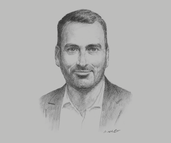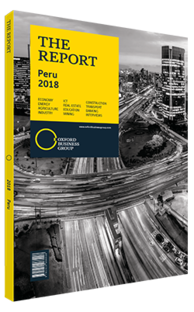Rafael Álvarez, CEO, Backus : Interview

Interview : Rafael Álvarez
What role does innovation play in enhancing efficiency and decreasing costs?
RAFAEL ÁLVAREZ: Improving efficiency and productivity is something that companies should always try to accomplish. In this regard, innovation in processes and products is essential to guarantee the sustainability of efforts to enhance productivity and prevent cost-cutting measures from having a negative impact on the core business. Ultimately, it is the successful innovation of processes that allows a company to reinvent its production chain. The main barriers to this are complacency and short-term thinking. Innovation requires tackling any challenges faced by a business; and therefore looking for gaps and opportunities is key. It is also important to conduct thorough and wide-reaching benchmarking. In fact, when benchmarking one’s business with other areas and sectors the conclusion will always be that there is room for improvement. This is where innovation comes in, by helping to find and exploit those gaps.
How can the competitiveness of industry be strengthened, and what are the main challenges?
ÁLVAREZ: One of the greatest barriers to enhancing competitiveness is tied to the country’s infrastructure gap, which requires annual investments of more than 8% of GDP. The level of connectivity between regions is very low, and transport infrastructure requires nearly $58bn of investment, which is a deterrent to the development of any agglutinating strategies throughout the country. There are also regulatory challenges; specifically, the application of labour laws – not necessarily the legal framework itself – prevents labour mobility and hinders the promotion and recognition of meritocracy.
Furthermore, increasing levels of formality would contribute to the improvement of Peru’s competitiveness. In this regard, it is important to distinguish between those who choose to remain informal and those who would join the formal economy but cannot afford it due to the prohibitive cost of the process. The complexity of regulation is enhanced by a lack of cohesiveness between the different regulatory frameworks at the local, regional and state levels.
What impact has Peru’s purchasing power growth had on the beverage industry over the last decade?
ÁLVAREZ: One of the defining traits of Peru is the multiple realities that coexist in the country. In Lima, you can see the past, the present and the future of the beer industry. In more affluent districts, trends are similar to the more mature markets of Europe or North America, and are therefore at the vanguard of the industry. Likewise, in middle-class urban areas, one can see the current trends of the beer industry.
Higher purchasing power has created an emerging middle class that is increasingly demanding. However, in many parts of the country, the market is composed of consumers with limited access to basic public services. Considering that the beverage industry is one of economies of scale, this lack of access to services inflates prices in underdeveloped and remote areas, pushing consumers to opt for more affordable yet harmful options, such as smuggled or adulterated alcohol. Nevertheless, the wealth that has been generated over the last 10 to 15 years has contributed to a reduction
of poverty and a doubling of the average income for lower-income citizens. In this context, trends seen at the vanguard of the industry have made their way to all socio-economic levels, due to the overall increase of purchasing power. Another particularity of the Peruvian consumer is the drive for self-improvement, which is shown by the fact that Peru remains one of the most entrepreneurial countries in the world, according to the Global Entrepreneurship Monitor. An ambitious and educated consumer is demanding and strives to achieve more than the previous generation. This drive is one of the main factors that steers consumption, which means there is potential for growth in the beverage industry
You have reached the limit of premium articles you can view for free.
Choose from the options below to purchase print or digital editions of our Reports. You can also purchase a website subscription giving you unlimited access to all of our Reports online for 12 months.
If you have already purchased this Report or have a website subscription, please login to continue.

